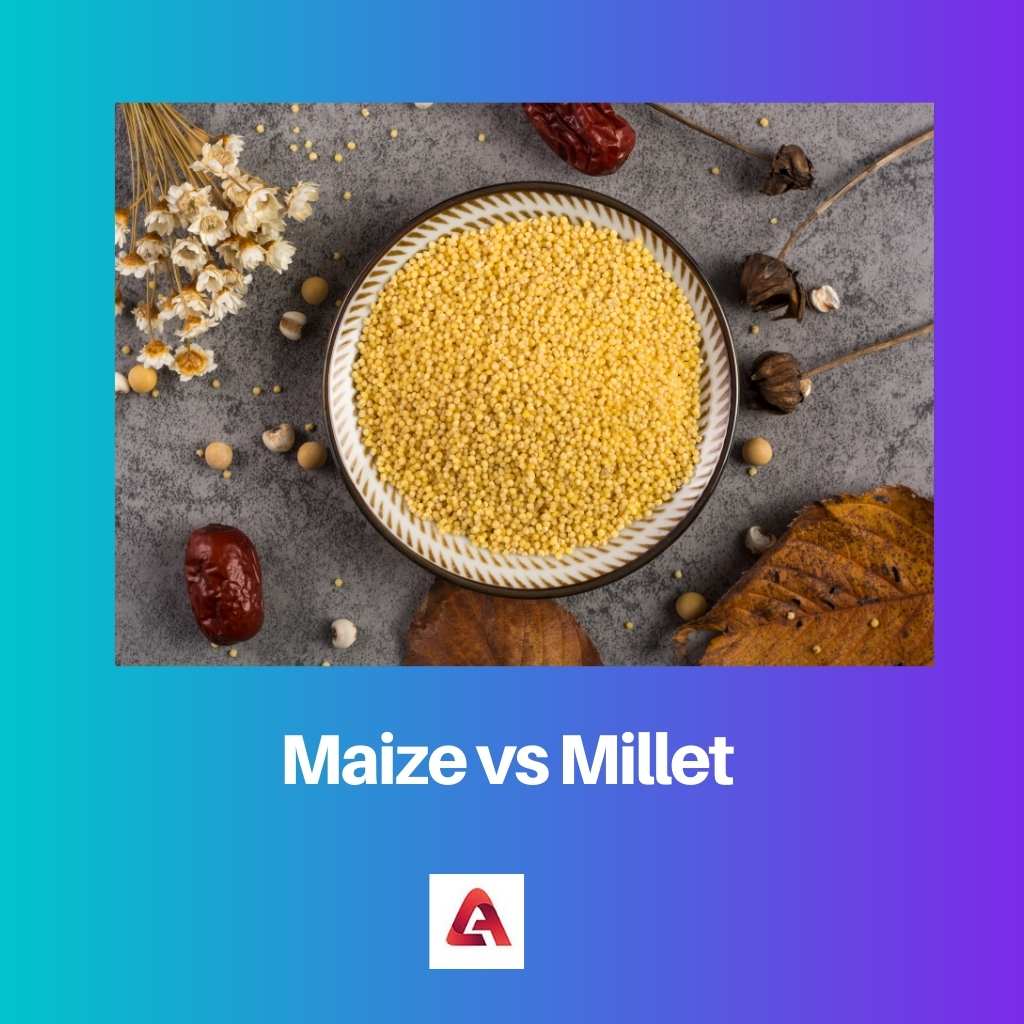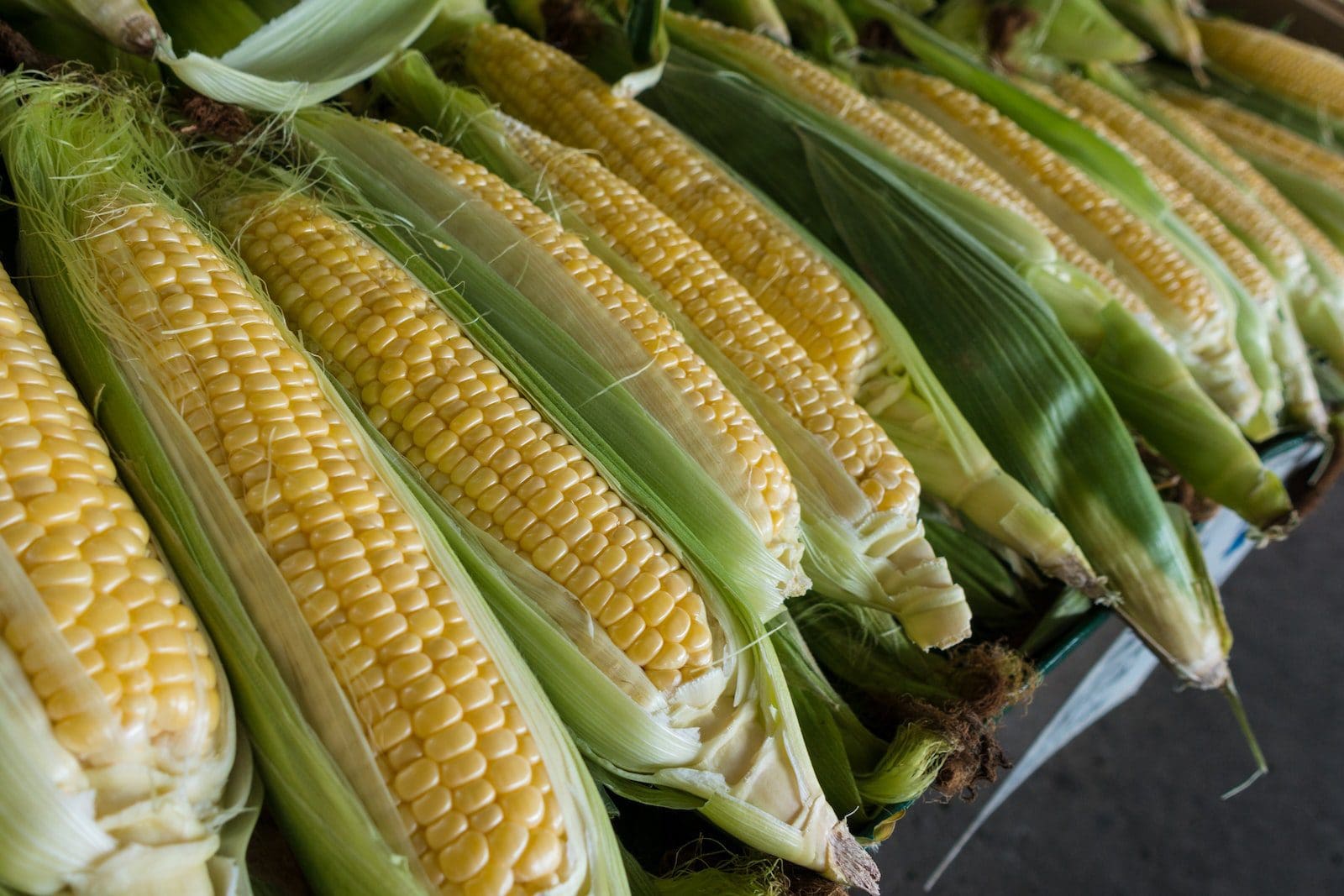Humans require food in addition to oxygen and water to survive.
Food is now divided into two categories: that which comes from plants and trees, and that which comes from animals.
Fruits, vegetables, maize, millet, cereals, and other foods derived from plants and trees can be further classed as fruits, vegetables, maize, millet, cereals, and so on.
Key Takeaways
- Maize, also known as corn, is a cereal crop primarily used for human consumption, whereas millet is a hardy, drought-resistant crop primarily used for animal feed and bird seed.
- Maize is high in carbohydrates, while millet is high in protein and fiber.
- Maize is more widely cultivated and consumed worldwide than millet.
Maize vs Millet
Maize, is a cereal grain. It is a staple crop in many parts of the world and is used as animal feed, as well as for human consumption. Millet is a type of food grain which belongs to a group of small-seeded grasses. There are several types of millet, all of which are cultivated for food.

Maize is a technical term for corn that comes from the Spanish word “maiz,” which was adopted into the English language in the mid-16th century.
It is a plant with large grains on a cob that is mostly found in North American regions.
This plant has the potential to provide a wide range of items for humans and animals.
Millets are one of the most widely consumed whole grains in the world, and many people include them in their daily diet.
Millets have a slightly nutty flavor when cooked to the optimum texture and might be gritty if not swallowed thoroughly.
Millets come in a wide range of colors and have little variations in their outside look.
Comparison Table
| Parameters of Comparison | Maize | Millet |
|---|---|---|
| Calories | 96 | 378 |
| Protein | 3.4 grams | 11.02 grams |
| Carbs | 21 grams | 72.85 grams |
| Fat | 1.5 grams | 4.22 grams |
| Types | Flour corn, pod corn, popcorn, striped maize, waxy corn, dent corn, etc. | Sorghum, foxtail millets, Pearl millet, little millet, finger millet, Kodo millets, Proso millet, barnyard millet, etc. |
| Origination | 4,500 years ago | 4,000 years ago |
What is Maize?
Maize is a cereal that was cultivated 10,000 years ago by ancient civilizations in southern Mexico.
It is commonly referred to as corn in North American and Australian English.
Maize has replaced wheat and rice as a staple food in many regions of the world, with maize production topping wheat and rice together.
Along with being consumed by people directly, maize can also be used in corn, corn ethanol, animal feed, corn syrup, and a lot of other maize products.
There are six fundamental varieties of maize. These include sweet corn, pod corn, popcorn, flint corn, and flour corn.
It is possible that it is the most consumed cereal on the planet due to its popularity and the vitamins it contains.
The majority of people prefer it on its own, but it is occasionally served with fried or dry rooster or as part of a salad.
This phrase was first applied to Zea Mays, a plant that can be found in most sections of the United States.
It is the distinction of all the phrases maize and corn, and it was first used maize in 1492 when Columbus discovered it in front of numerous Taino people.
Maize is the most widely farmed grain on the planet, producing more weight per year than any other grain. In 2014, global production totaled 1.04 billion tonnes.
The United States’ high level of maize output and standing as the world’s top producer is due to government subsidies.
Maize can also be picked and consumed while still unripe when the kernels are completely developed yet soft.
To make unripe maize edible, boil or roast the entire ear and consume the kernels right off the cob.

What is Millet?
Millets are low in nutritional value because they lack all nine necessary amino acids that the body needs but cannot make on its own.
It has a more rounded flavor with a nutty undertone. Millets come in a range of shapes and sizes, including foxtail and finger millet.
For persons with health problems, it is one of the greatest carbohydrate-free alternatives.
As it is a whole grain, it has more bran and endosperm nourishment within the thin husk-like texture.
Millet is one of the several grains on the nutritional chart that are referred to as super grains. It’s also gluten-free, as well as a high-nutrient grain.
Millet has one major disadvantage: it lacks the essential amino acid lysine, which is extremely beneficial to the body.
As a result, millet is also known as an incomplete protein source.
Millets are available in a variety of hues, including red, yellow, white, and grey.
However, millet grains feature scars on the outside that resemble the hilum in fruits, regardless of their hue.
Millets are one of the more affordable whole grain grains, and their high nutritional value makes them an excellent value.
It’s vital to note that millets aren’t just for human use; they’re also used as bird feed and mixed with fodder for animals.
When you consider a few other factors, millets could be dangerous.
It includes phytic acid, an anti-nutrient that acts as a barrier to the body’s ability to absorb other nutrients obtained from other food sources.

Main Differences Between Maize and Millet
- Maize has 96 calories, while millet has 378 calories.
- Maize has 3.4 grams of protein, whereas millet has 11.02 grams.
- Maize has 21 grams of carbs per 100 grams, and 100 grams of millet has 72.85 grams of carbs.
- 100 grams of maize has 1.5 grams of fat, and millet has 4.22 grams of fat.
- The various types of maize are flour corn, dent corn, striped maize, etc. Whereas the various types of millet are sorghum, barnyard millet, pearl millet, etc.
- Maize was first cultivated 4,500 years ago. On the other hand, millet was first cultivated around 4,000 years ago.

References
- https://www.jstage.jst.go.jp/article/jsbbs1951/45/2/45_2_157/_article/-char/ja/
- https://www.sciencedirect.com/science/article/pii/S1161030114000021
